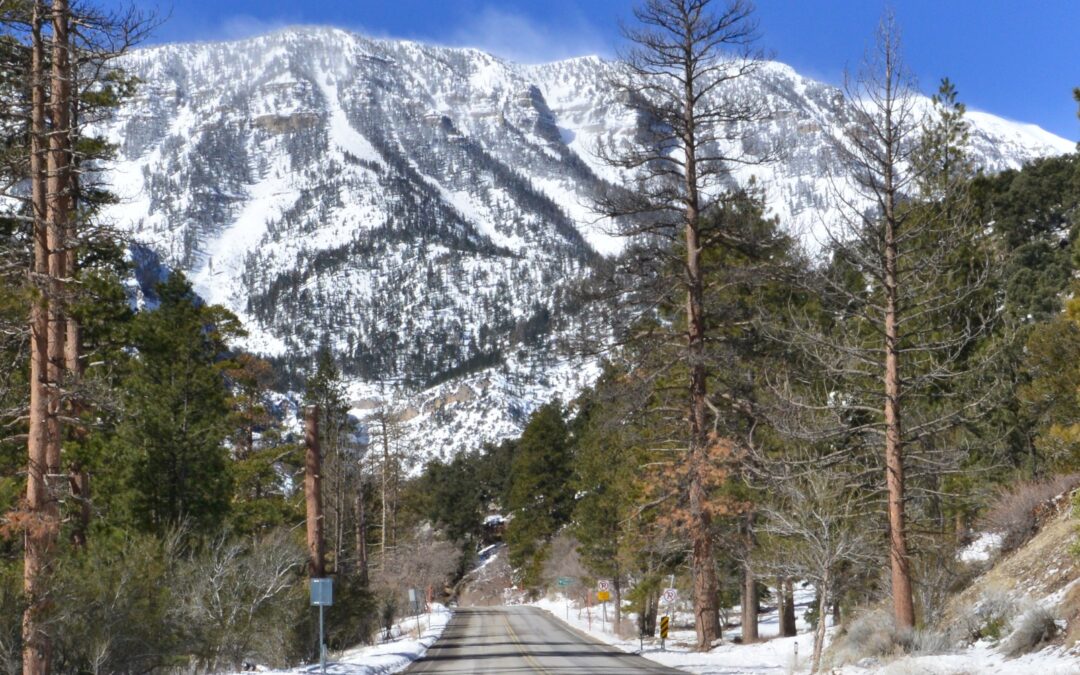Reaching 11,918 feet above sea level, Mt. Charleston is the highest peak in the Spring Mountains, a forested oasis on the Toiyabe National Forest west of Las Vegas. Because of its high elevation and drastically different ecosystem than the surrounding Mojave Desert, Mt. Charleston is considered a “sky island.” In 1989, the area’s unique qualities earned a wilderness designation that protects 56,018 acres, including 18,000 acres of bristlecone pine groves and the most bio-diverse region in southern Nevada.
A hamlet nestled among the eastern slopes of Mt. Charleston takes its name from the mountain, and its residents have expressed alarm at the deaths of thousands of trees since the Nevada Department of Transportation and the Forest Service began using de-icing salts on local roads more than a decade ago. Long-time residents insist that the forest was healthy during the decades when roads were maintained without salts, just plows and sand. The community funded a scientific study to determine why 300-year-old ponderosa pines are dying. Dr. Dale Devitt, a soil and water scientist with the University of Nevada – Las Vegas, performed the research.
“We had places where the salinity was higher than what you’d find in seawater,” Devitt told the Las Vegas Review Journal in 2016. “That shouldn’t happen.” At that time, Forest Service Plant Pathologist John Guyon had conducted annual assessments of the Spring Mountains for three decades. He said, “What we saw in 2012 was something we had never seen before…. There was a very definite increase in tree damage. We saw a lot of freshly salt-damaged trees.”
But the damage goes beyond trees. Sodium chloride from road deicers is infiltrating local drinking-water sources, and the increased salinity of the water is leaching toxic metals like lead from water pipes, similar to what happened in Flint, Michigan. While the problems in Flint have made national headlines, Mount Charleston has largely been ignored. A decade after Devitt published his study, the Forest Service and the Nevada DOT continue to use deicing salts on the roads.
As the trees die, the Forest Service resorts to its ‘hazard tree” rationale to then allow these old-growth ponderosas to be logged in the name of public safety. If there is a modern equivalent to the hydra, it must be Forest Service logging policy: eliminate one reason for cutting down a tree and the agency sprouts two new reasons.
Watch Halt the Salt on YouTube for additional information about the damage on Mt. Charleston from deicing salts.


